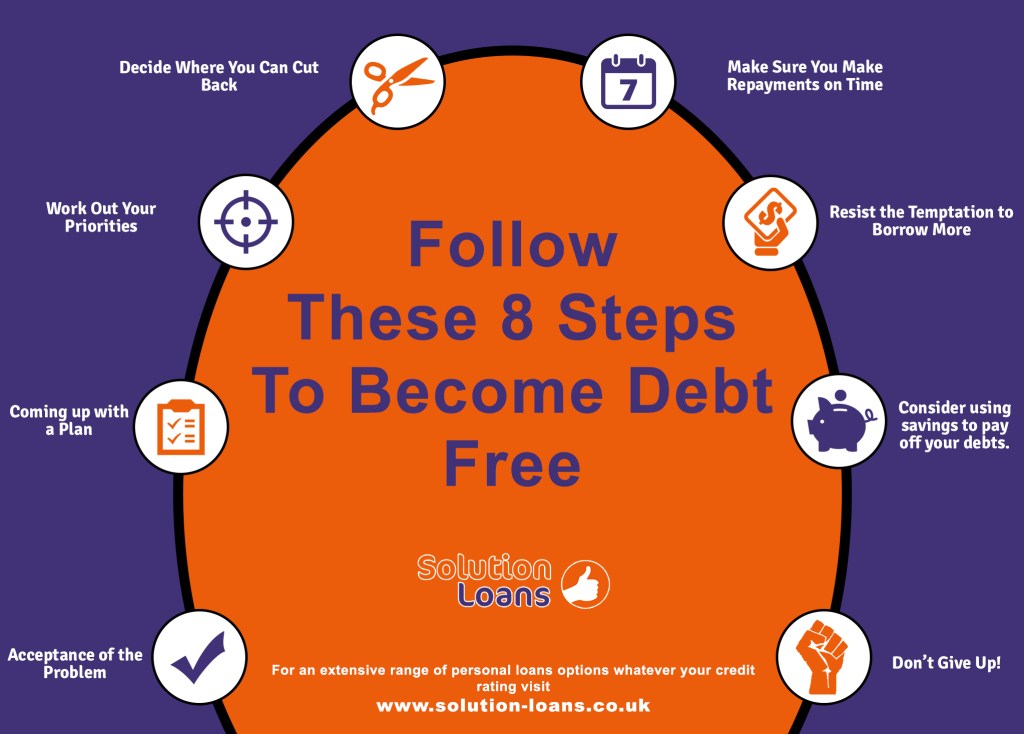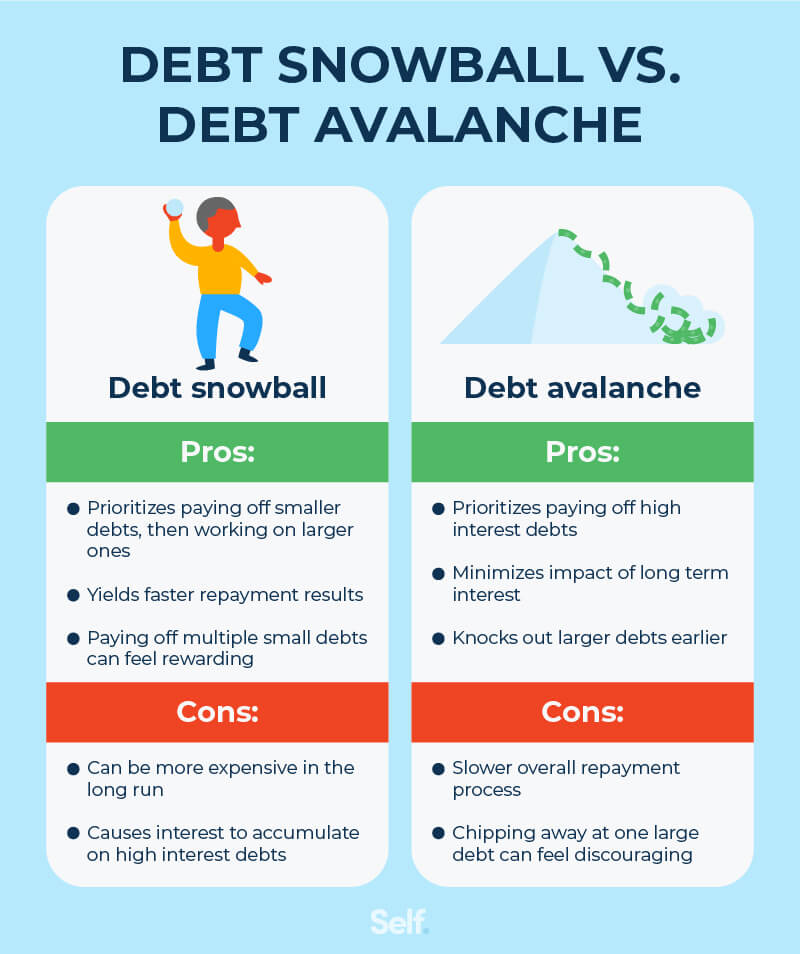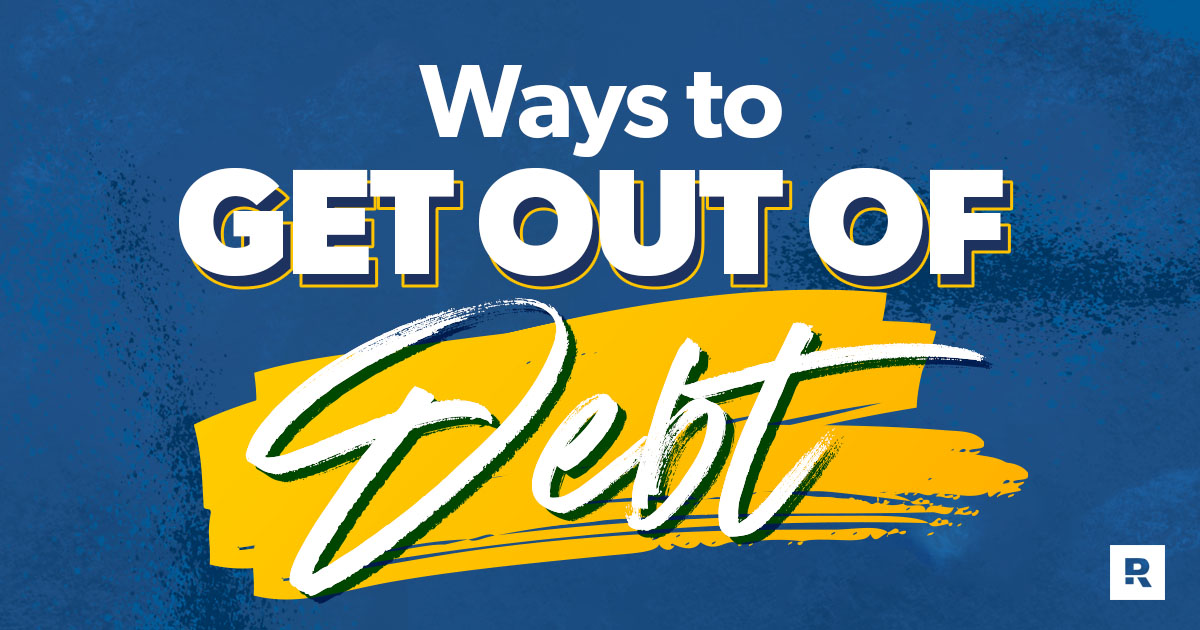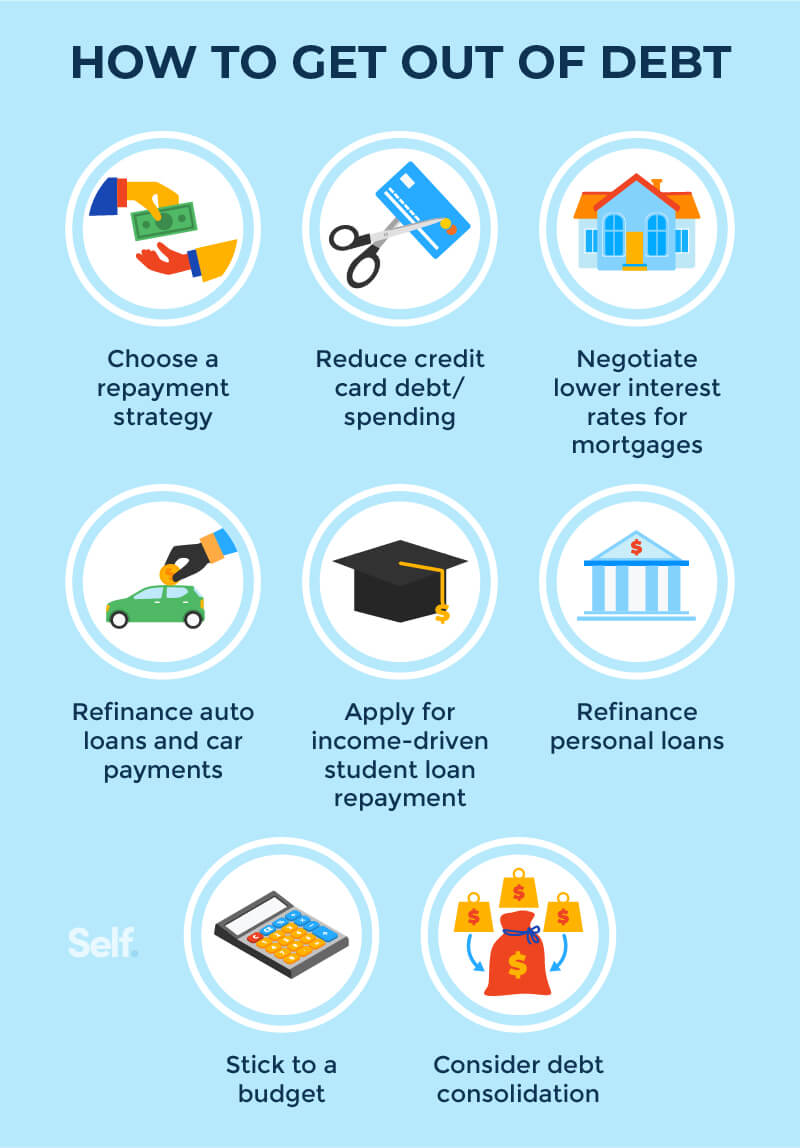To become debt-free, focus on creating a budget and reducing expenses. Achieving financial freedom is a goal for many individuals, and one significant step towards attaining this is to become debt-free.
Debts can accumulate quickly and hinder your ability to live a comfortable and stress-free life. However, by implementing effective strategies, you can work towards eliminating debt and gaining control over your finances. This article will provide essential tips on how to become debt-free, including creating a budget, reducing expenses, and developing a repayment plan.
Incorporating these strategies into your financial management can ultimately lead to a debt-free future and a stronger financial foundation. So, let’s get started on the journey towards financial freedom!
Table of Contents
Create A Budget
Creating a budget is a crucial step towards financial stability and becoming debt-free. A budget helps you track your income and expenses, identify areas where you can cut back on spending, and have better control over your financial situation. By analyzing your financial habits and making conscious decisions about your money, you can take charge of your debt and work towards a debt-free future.
Track Your Income And Expenses
Tracking your income and expenses is the foundation of creating a successful budget. Start by making a list or a spreadsheet of all your income sources, such as your salary, side hustle earnings, or any other form of income. Next, gather all your bills, receipts, and financial records to determine your monthly expenses.
To track your expenses effectively, categorize them into essential and non-essential expenditures. Essential expenses include items like rent or mortgage payments, utilities, groceries, and transportation costs. Non-essential expenses are things like entertainment, dining out, or impulse purchases.
Once you have a clear overview of your income and expenses, you can calculate your monthly surplus or deficit. This will give you an idea of how much money you have left after covering your essential expenses and how much you need to cut back in other areas.
Identify Areas To Cut Back On Spending
Identifying areas where you can cut back on spending is an essential step toward becoming debt-free. It may require some honest evaluation and lifestyle adjustments, but it’s worth it in the long run. Take a close look at your non-essential expenses and ask yourself if you can live without certain luxuries or find cheaper alternatives.
To identify areas for potential cutbacks, consider the following strategies:
- Evaluate your subscriptions and memberships. Cancel those you don’t use or find cheaper alternatives.
- Review your grocery shopping habits. Plan meals, buy in bulk, and avoid unnecessary food waste.
- Cut down on entertainment expenses. Look for free or low-cost activities, take advantage of community resources, and limit dining out.
- Reduce transportation costs. Explore carpooling, public transportation, or walking/cycling for short distances.
- Lower utility bills. Practice energy-saving habits, such as turning off lights when not in use, adjusting thermostat settings, and minimizing water consumption.
Remember that every small cutback adds up and can make a significant difference in your budget. It’s important to stay consistent and disciplined in your spending habits to accelerate your journey towards becoming debt-free.

Credit: www.solution-loans.co.uk
Develop A Repayment Plan
Developing a repayment plan is essential for anyone looking to become debt-free. By strategizing how to distribute payments and prioritize debts, individuals can take control of their finances and make progress towards financial freedom.
Developing a repayment plan is a crucial step towards becoming debt-free. By creating a well-defined strategy, you can effectively manage your debts and work towards eliminating them. Follow these steps to develop a repayment plan that suits your financial situation.List Your Debts
To begin with, it is essential to make a comprehensive list of all your debts. This includes credit card bills, student loans, personal loans, and any other outstanding amounts you owe. Listing your debts allows you to have a clear overview of your financial obligations and serves as a starting point for developing your repayment plan.Prioritize And Strategize
Once you have listed your debts, the next step is to prioritize and strategize your repayment plan. Start by categorizing your debts into high-interest and low-interest ones. High-interest debts, such as credit card bills, should be given top priority as they tend to accumulate more interest over time. By allocating more funds towards these debts, you can effectively reduce the overall interest burden. After prioritizing, consider the repayment strategies you can adopt. Two popular methods include the snowball method and the avalanche method. The snowball method involves paying off the smallest debts first, while the avalanche method focuses on repaying debts with the highest interest rates. Analyze your financial capabilities and choose the strategy that best suits your circumstances. Consider Debt Consolidation or Refinancing If you are struggling to manage multiple debts, debt consolidation or refinancing might be worth considering. Debt consolidation involves combining several debts into a single loan, usually with a lower interest rate. This can make your repayments more manageable and simplify the overall debt repayment process. On the other hand, refinancing involves negotiating with your creditors or finding a new lender to obtain a lower interest rate on your existing loans. This can help reduce your monthly payments and save money in the long run. In conclusion, developing a repayment plan is a crucial step towards achieving a debt-free life. By listing your debts, prioritizing and strategizing, and considering debt consolidation or refinancing options, you can effectively work towards eliminating your debts and gaining financial freedom. Take control of your finances today and set yourself on the path to becoming debt-free.Increase Your Income
Discover proven strategies to become debt-free and increase your income. Unlock financial freedom through smart money management and effective debt repayment techniques. Take control of your finances and create a secure future for yourself.
When it comes to getting out of debt, increasing your income can be a game changer. By finding ways to earn more money, you will have extra funds to put towards paying off your debt faster. Here are two strategies to help you increase your income:
Explore Side Hustles
If you’re looking to generate additional income, exploring side hustles is a fantastic option. Side hustles are small jobs or projects that you can take on alongside your regular job. These can include freelance work, selling handmade crafts online, or offering services like tutoring or pet sitting.
Here are some ideas for side hustles to consider:
| Side Hustle | Description |
|---|---|
| E-commerce Store | Set up an online store and sell products that you are passionate about. |
| Rideshare Driver | Drive for a ridesharing platform and make money in your spare time. |
| Freelance Writing | Offer your writing skills to businesses or individuals who need content. |
| Photography | Take up photography as a side gig and sell your photos online or to clients. |
By exploring side hustles, you can not only give your income a boost, but also tap into your skills and passions to make extra money.
Request A Raise Or Promotion
If you’ve been working hard and feel that you deserve it, requesting a raise or promotion can be a great way to increase your income. Here are some tips to help you navigate this process:
- Research: Familiarize yourself with industry salary standards and gather evidence of your accomplishments to support your case.
- Prepare: Schedule a meeting with your supervisor and come prepared with a list of reasons why you deserve a raise or promotion.
- Communicate: Clearly articulate your achievements, skills, and contributions to the company during the meeting.
- Be flexible: If a raise or promotion isn’t feasible at the moment, consider negotiating for other benefits like additional vacation time or professional development opportunities.
- Follow up: Regardless of the outcome, follow up with a thank-you note expressing your appreciation for the opportunity to discuss your progress and goals.
Remember, requesting a raise or promotion requires confidence and a well-prepared approach. Don’t be afraid to advocate for yourself and the value you bring to your organization.

Credit: www.self.inc
Reduce Your Expenses
Reducing your expenses is a key step in becoming debt-free. By lowering your monthly bills and cutting unnecessary costs, you can free up more money to put towards paying off your debts. Let’s explore some strategies for achieving this:
Lower Monthly Bills
Lowering your monthly bills can have a significant impact on your overall expenses. Here are a few ways you can achieve this:
- Review your service providers: Consider shopping around for new providers to potentially get better deals on your utilities, internet, cable, or insurance.
- Negotiate with your providers: Contact your current service providers and negotiate lower rates or ask for any available discounts.
- Bundle your services: Look into bundling your internet, cable, and phone services with the same provider to potentially save on monthly fees.
Cut Unnecessary Costs
Identifying and eliminating unnecessary costs from your budget can lead to significant savings. Here are some areas to consider cutting back on:
- Eating out: Instead of dining out frequently, try cooking at home and taking packed lunches to work. This can help you save money on restaurant bills.
- Entertainment subscriptions: Assess your streaming and subscription services and unsubscribe from those you rarely use or can do without.
- Impulse purchases: Before making a purchase, ask yourself if it is a want or a need. Minimizing impulse buying can help you save money.
- Unused memberships: Evaluate any memberships or subscriptions you have and cancel those you no longer use or find alternatives that offer similar benefits at lower costs.
- Transportation costs: Consider carpooling, using public transportation, or even cycling to reduce fuel and maintenance expenses.
By reducing your monthly bills and cutting unnecessary costs in these areas, you can make significant progress towards achieving a debt-free future. Take a close look at your expenses, identify areas where you can make changes, and commit to stick to your budget. Every small saving counts and brings you one step closer to financial freedom!

Credit: www.ramseysolutions.com
Frequently Asked Questions Of Ways To Become Debt Free
How Do I Become Completely Debt Free?
To become completely debt-free, follow these steps: 1. Create a budget and stick to it. 2. Cut unnecessary expenses and save money. 3. Pay off high-interest debts first. 4. Consider debt consolidation or negotiating with creditors for lower interest rates.
5. Stay committed and disciplined in paying off debts.
How Long Will It Take To Pay Off $20000 In Credit Card Debt?
It depends on your repayment strategy, but typically, paying off $20,000 in credit card debt may take several years. Making consistent monthly payments and potentially increasing payments can help expedite the process. Consider seeking professional advice to create an effective repayment plan.
How Can I Legally Avoid Paying Debt?
Legally avoiding debt requires proactive financial management. You can negotiate with creditors for a rescheduled payment plan, seek credit counseling, or explore debt consolidation options. Bankruptcy may be a last resort, with potential consequences. Remember, it’s crucial to honor financial obligations and seek professional guidance when necessary.
How To Pay Off $50,000 In Debt?
To pay off $50,000 in debt, follow these steps: 1. Create a budget and cut down on unnecessary expenses. 2. Increase your income by getting a second job or freelancing. 3. Prioritize your debts and make larger payments on high-interest debts.
4. Consider consolidating your debts into a single, lower interest loan. 5. Stay disciplined and stick to your repayment plan.
Conclusion
Becoming debt-free requires commitment, perseverance, and smart financial planning. By implementing the strategies discussed in this blog post, such as creating a budget, cutting expenses, increasing income, and paying off high-interest debts first, you can take control of your financial situation.
Remember, every small step counts, and consistency is key. Stay focused on your goals, and you’ll soon be on your way to a debt-free future. Start your journey to financial freedom today!
